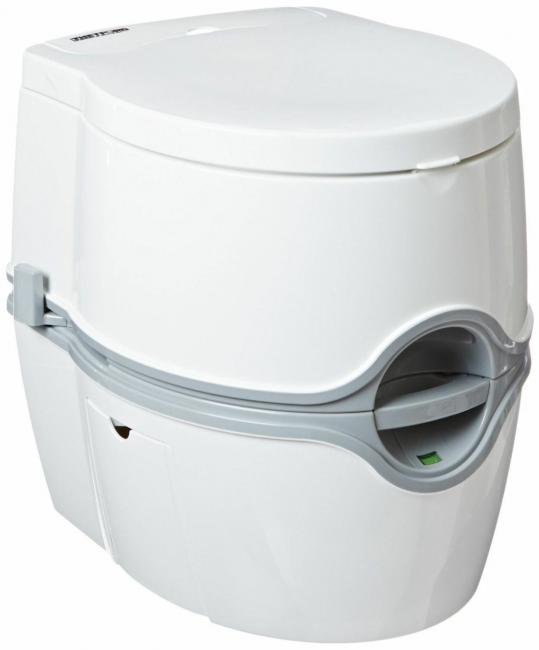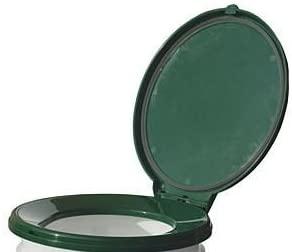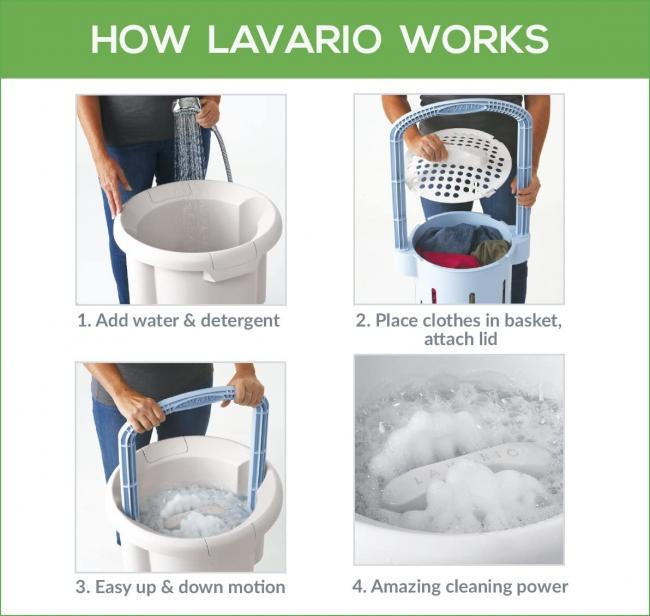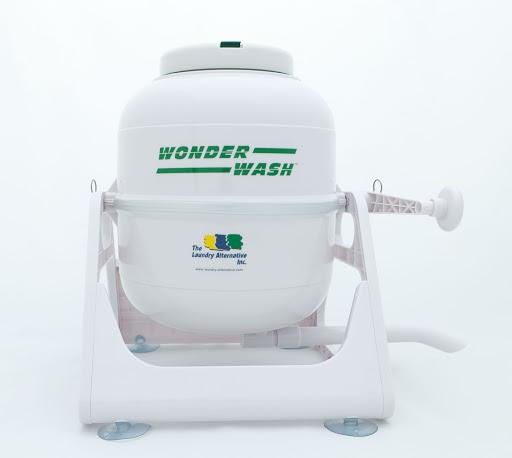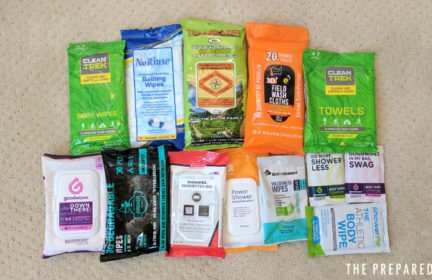Sanitation when the grid/water is down
After the winter storm excitement in Texas last week, I realized there is very little on prepping sites about sanitation. Without water pressure, many in Texas lacked flushing toilets and showers. There was a nasty story from a hospital in San Antonio about transferring patients because all the toilets in the building were overflowing.
We were caught a bit off guard – we usually fill buckets of water to flush toilets right before a tropical storm or hurricane (if we don’t evacuate). In this case we didn’t think of it, and I didn’t want to use up stored drinking water.
Aside from breaking down and finally buying a generator to keep our well powered, I’ve been looking at simple composting toilets. These look incredibly easy to set up. Might be worth an article here at some point?
The best information I’m finding is from the RV/Marine community who don’t want to deal with black water tanks. Anyway – some food for thought and discussion…
-
Comments (36)
-
Josh CentersContributor - March 2, 2021
You could buy a toilet seat that fits on a five-gallon bucket. But where to put the waste? That’s a great reason to have a compost pile. The Humanure Handbook has more on composting human waste to use as fertilizer.
A big problem we had was trash pickup, since our service didn’t run that week. It made me realize that in a real crisis the trash would pile up quickly. I can compost the organic stuff and I could get a burn barrel for much of it, but the plastic would be a problem. I could maybe keep a barrel of acetone around to dissolve plastic in, but that’s something I need to noodle on more.
-
Bill Masen - March 2, 2021
We keep a camping toilet and chemicals as part of our preps, the chems break down the waste allowing us to bury it at the bottom of the garden if required, But the toiley itself which holds a fresh tank and waste tank is good for at least a weeks use for an average family. Below Thetford 365 toilet. We also retain the grey water from the bath if needed as extra flushing water.
-
-
AT - March 2, 2021
A fairly easy solution would be to use post-hole diggers to dig down a few feet. The dirt gets piled next to the hole and some is kicked in after each use. This assumes of course that you have at least a little land to work with and it’s diggable. A toilet seat attached to a lawn chair (original bottom removed of course) and black plastic sheeting for privacy would be extra credit. Works for food scraps too.
-
Bill Masen - March 3, 2021
Great fun in mid winter or if its pouring with rain 🙂
-
hikermor - March 3, 2021
I have used a bucket with a toilet seat lid, along with deodorizing/sanitizing packets quite successfully for up to two weeks on field projects. Each paaccket is good for about three uses
I like solar showers as well. Those containing about two and a half gallons will do an adequate job and are easy to handle.
-
Conrad B - March 3, 2021
AT – I actually like that idea of the post-hole digger crapper!
-
-
RedneckContributor - March 3, 2021
I too think the more economical option is the toilet seat that fits on the 5 or 6 gallon plastic pails. I have one even though I’m on my own septic tank… just in case. If you have a backyard you can just add dirt to it after use & then after a few uses, dump it all back in the hole. Another good option is to keep a bucket of cat litter. This way you can use inside or in your garage and not worry about the weather. This works even for those living in a condo or apartment.
-
Conrad B - March 3, 2021
While a bit off the topic of toilets, what are your guy’s plans for laundry SHTF?
Sure you can just do it by hand in a bucket of soapy water and another bucket to rinse, but have you thought of a faster or more economical method? Lets say an emp hit and your normal washer and generator are fried so you HAVE to rely on non-electricity methods.
-
RedneckContributor - March 3, 2021
I keep a Lavario portable clothes washer in my stores. Never used it but is rated highly. https://www.amazon.com/Lavario-Portable-Non-Electric-Apartments-Delicates/dp/B07CZNN4WL/ref=psdc_13397451_t3_B00WVTXVMC
-
Conrad B - March 3, 2021
I’ve never seen that one before, but it looks like it would work well.
Wonder how likely it is to splash though. When i’ve done that up down motion while trying to unclog the toilet, I have to be careful to not get any backsplash. The same principle probably applies with this, go down too fast and get splashed. But a nice gentle up and down would keep the water in the bin.
-
Bill Masen - March 3, 2021
We use as a back up washing machine a hand operated device meant for use in RVs, its similar to the ones in the images below.
https://www.youtube.com/watch?v=RgYFAX7MNHI
-
Conrad B - March 3, 2021
Bill – That’s more like the ones that i’ve seen around and have been thinking of getting. The one in that video though seems pretty flimsy. I think I would try and machine a better stand for it to rotate on if I had to rely on that for all my washings. But as a backup, that is a good solution.
I’ve also been watching some YouTube videos of bike powered washing machines. Pretty smart idea. https://youtu.be/3x6vyc-47B8?t=55
-
AT - March 3, 2021
I guess I’m the minimalist around here :). I’ve spent fairly long periods of time where my only access to laundry was a rubber tub on the porch. While washing by hand is time consuming, once you get a rhythm down it’s not too bad. I tended to wash every few days to spread out the work. In many other countries you can buy soap specifically made for hand washing that rinses out with less effort but it would probably be hard to find here the US. Machines are definitely easier but it’s not so bad once you do it enough to get a process. It’s still my go-to when I’m traveling for more than a few days to avoid the exorbitant fees hotels charge for laundry and would be my method of choice if I didn’t have my current appliances.
-
TheFuries - April 19, 2022
Molly’s Suds works well for sink / tub washing. We used to do something similar during communism when the power and water were shut off the majority of the day. Sheets are the hardest, but using an in-tub agitator for less than $15 cuts the time in half.
-
Liz Klein - April 19, 2022
Are you talking about a powered agitator like this?
Do they work well?
-
TheFuries - April 19, 2022
More like this low-tech, low-energy option. You still need to put some upper strength into it, but you don’t have to rely on anything but yourself and a simple tool. The agitator you posted looks great, but I’ve not tested it. I’ve used the above link (that looks like it increased in price since I bought one) for years during hurricane season when we had boil warnings and no power.
-
Liz Klein - April 20, 2022
Oh thank you for clarifying! A low tech option is always superior. I’ve been wondering how I would do laundry without my washing machine.
Would I just make a bucket of soapy water, throw in my dirty clothes, plunge away with that agitator, and then rinse and dry? How do I know how long to agitate for?
-
TheFuries - April 20, 2022
I hear you about low-tech! The option you posted was very interesting, great for large items if you have some power.
How long you agitate depends on 1) how large the item is, 2) how dirty, 3) if it’s been spot treated. I spot treat everything (except silk or wool) with Charlie’s Soap stain treatment (Dr. Bonner’s has excellent guidance on using Sal Suds or Dr. Bronner’s castile soap for this, also) if the stain is bad enough.
When hand-washing, I frequently check the item to see if the stain is lift, but pre-treating the fabric is key to getting even heavy stains out.
I typically do this work in the bath tub (less to lift). If you’re preserving water, a bucket works great, too. Or even a deep (disinfected) kitchen sink. If laundering sheets and other items that become very heavy with water, I recommend washing in a large basin outside rather than a bucket. You’ll encounter a lot of dripping when transferring the item to the clothes line through the house.
You then want to leave the garment or textile enough room to get deeply wet and then create friction in the water. There are special soaps (usually British or German, some Italian) that you can use for hand-washing. I just use Molly’s Suds. A powder works better rather than a liquid soap because most liquid soaps weigh the fabric down and don’t rinse out as easily. I recommend a buddy if you need to wring out sheets or blankets unless you’ve got wicked upper body strength.
Hanging wash on a laundry line helps to disinfect fabric. The sun burns off many kinds of bacteria and viruses. Solar power has lots of positives 🙂
-
Liz Klein - April 21, 2022
Oh! Thank you so much for your detailed response. I will be buying one of those manual agitators. Washing in the bathtub makes a lot of sense, but I’ll have to invest in a bucket to transport the wet fabric from the bathroom to the sunny clothes line outside so I don’t drip everywhere.
-
TheFuries - April 22, 2022
Glad I could be of support in any way!
-
-
Thomas GomezStaff - March 4, 2021
My well has been down for a few days. We have been using water from our rain barrels to flush the toilets and stored (purified) water for cooking, coffee, tea and hygiene. It’s amazing how quickly laundry and dishes start piling up.
If we were out of water long term, I would build an outhouse/toilet seat over our septic tank access point to bypass our toilets and save water.
-
RedneckContributor - March 4, 2021
My well went down a few weeks back. Ended up being the pressure switch again, so this time I watched what they did & kept the bad switch. I then ordered one on amazon and now have a spare. If I saw I couldn’t get repaired within a day or so, I would try replacing that switch on my own.
-
Thomas GomezStaff - March 4, 2021
It’s usually a pressure switch or a control box. In this case the pipe from the pressure tank to the well broke. It was under a concrete pad that we tore out last night. Well guys are swapping out that pipe today. Hopefully the pressure tank is good.
Knowing the basics about switches, and control boxes is important and can save you from a hefty bill.
-
-
RS - March 4, 2021
I strongly think The Humanure Handbook (Joseph Jenkins) and that *specific system* of composting sanitation should get more airtime among people interested in emergency sanitation and general preparedness. Obviously not everyone has the time or interest to read his book, so there could be a lot of value in transmitting the message in different formats. At the very least, I think people would benefit from knowing there’s a clear alternative to “prepare to dig a pit latrine in your backyard!” in response to a sanitation system emergency (whether water outage or sewer problems).
My favorite quick overview of the system is in this 15 minute video, which is a presentation by Jenkins about implementing this system in post-earthquake Haiti:
(the playlist includes a number of other videos on this system in Haiti)
Jenkins has written an overview of the system and its safety in this short PDF document: https://humanurehandbook.com/downloads/humanure_sanitation_paper.pdf
And the entire 4th edition of his book is available for free, online: http://humanurehandbook.com/contents.html
I think it would be great for people to talk more about this system especially because I see so many people (erroneously) assuming that the composting sanitation described by Jenkins is basically the same as commercially available “composting toilets.” This comparison/confusion is understandable since the naming of “composting toilets” isn’t precise, but the comaprison still erroneous, and additional conversation might help clear up the confusion. In the 4th edition of the Humanure Handbook (this is the edition I read), Jenkins goes into pretty clear detail about the differences between the composting sanitation/humanure system he describes and commercial composting toilets.
To quickly summarize that detail: the Humanure System relies on different inputs than the standard commercial composting toilets, and you personally can recycle the results of the composting sanitation process. Specifically, using this system, you aren’t just storing your dried-out poop or filled “double doodie” bags somewhere until the garbage trucks start running again and you can dump the material with a sigh of relief. (Or until that one friend/community member who is an “extreme” composter swings by for materials and puts your stuff into *their* humanure system.) Instead, in the Humanure system you’re letting your household excrement start the composting process to recycle it into a useful resource. So, if you have the space to start the system ahead of an emergency, you could potentially set up your system to handle 1-2 years worth of excrement, which could be incredible freeing in an emergency. Instead of watching your collection of sealed poop buckets ominously grow in whatever location you’re stashing them, or wondering how many pit latrine holes you can dig in your backyard before you’re desperate for the sewer system to come back on line, you could use the humanure system as an alternative for as long as you need (provided you have the organic material inputs mentioned below).
I think more airtime/discussion is especially important, because while the humanure system consistently seems less financially costly than commercial composting toilet systems and more resilient to sanitation/water grid outages than flush-based systems, there *are* important inputs that anyone preparing needs to be aware of and should consider having before the emergency. Or know how to acquire quickly once emergency sanitation becomes needed. Because this composting sanitation system runs on compostable material rather than the water of traditional sewer systems, you can preserve limited water supplies, but you need to have the compostable materials available.
So, the main limiting inputs for the humanure system are:
* sufficient amounts of organic material with the appropriate qualities for the composting bin and for the dry toilet receptacles (for example: straw for the composting bin, and sawdust with 40-60% moisture content for the dry toilets, if I remember that moisture statistic correctly),
* space/an appropriate location to put the composting bin(s),
* watertight dry toilet receptacles (e.g., 5 gallon buckets),
* some water to clean the toilet receptacles between uses,
* time for the compost pile to sit in that space and process your household’s poop and pee (unless you are still planning to relocate the materials to the trash immediately after the emergency),
* and human attention to learn the basics of the system. (This sanitation method is like building a fire — relatively straightforward to implement by yourself and useful, but also capable of burning your house down/getting you sick if you don’t take the time to learn some basic precautions.)
Full disclosure: I’m not experienced in using this system, just someone actively planning for it in the future. So, my ulterior motive for mentioning this system wherever I can is wanting to draw out all of the people who have used it to share their experiences as I gain my own. I currently rent in a place with a shared, cramped urban backyard and only started composting (at all) last spring with the arrival of the pandemic and initial stay-at-home orders. So I’m still working through the more socially acceptable “cold composting, vegetable scraps only” course in my composting education (which is a really cool process to see in and of itself). I plan to step up to hot composting kitchen scraps and then humanure composting as soon as I get the freedom to do so
In the mean time, since reading Jenkins’ book, I keep the bare minimum of materials as part of my emergency sanitation preparedness efforts: spare 5 gallon buckets, dry toilet material, the browns used for my cold compost bin, and a plan for how to convert the current cold compost bin to a thermophilic humanure pile (if the sewer and water cuts off and no one knows when it’s coming back, I will definitely work things out with the people I share my backyard with).
-
RedneckContributor - March 4, 2021
The composting of animal waste, especially human, can be dangerous. You are dealing with pathogens that can kill. Last thing you want is to spread pathogens in your garden. Of course it can be done and is routinely done in certain parts of the world. For me, it is not worth the risk of handling it and cleaning the receptacles. If my septic systems were to go bad (I have two), I would simply revert to what has been used forever… latrines. Yes, they are just holes in the ground, but they are safe & they work.
Without a doubt, the best sanitation system after the grid goes down is a septic tank. All you need is water to add to your toilets. Pond water works just fine.
-
RS - March 4, 2021
“The composting of animal waste, especially human, can be dangerous. You are dealing with pathogens that can kill. Last thing you want is to spread pathogens in your garden.”
Yes. These are very legitimate and important concerns. I strongly encourage you to read at least the overview paper before dismissing this method due to concerns about the pathogens in human excrement: https://humanurehandbook.com/downloads/humanure_sanitation_paper.pdf
These concerns are exactly why Joe Jenkins:
1) is very particular about emphasizing the *composting* sanitation components of his system compared to the “dry out the poop and dispose of it later” aspects of commercial “composting” toilets, to the “store somewhere, eventually purge and dispose of” aspects of pit latrines, porta-potties, and septic systems, and to the anerobic decomposition processes of many modern wastewater treatment facilities.
2) takes great effort to explain that the details of his described (and used for four decades) humanure system are chosen to:
a) create a hot composting/thermophilic aerobic decomposition process in order to kill any pathogens present;
b) to prevent these pathogens from touching soil (in order to hinder their normal life cycles where relevant);
c) and to minimize human handling of the material while it is being composted and properly protect the compost pile and toilet receptacle from insect vectors and vermin by the use of appropriate cover materials.
3) discusses the pathogen testing he has conducted on his own compost and a variety of relevant (and independent from him) peer-reviewed papers testing the effects of aerobic composting process: both the effects of temperature increase on pathogen destruction and the “time spent in a vast ecosystem of microbes willing to consume these pathogens”
The evidence Jenkins has provided has convinced me that this is an important sanitation method that should be looked at in detail by anyone trying to understand what we can do with our poop and pee when existing water-based methods are unavailable. It won’t be the best solution/appropriate everywhere, but it should be properly reviewed to make that decision.
-
RedneckContributor - March 4, 2021
Of course this is something that should be reviewed & considered by those interested. I’m just saying, for me, composting manure is not something I do in normal times and would be the last thing I do in a crisis with possibly no access to healthcare. The conditions required to kill the pathogens have to be just right and then as you state, you need water to occasionally clean the receptacle. Done right, you have good compost. Done wrong, someone can die. The less I deal with feces, the better.
Keep in mind, I’m a lazy composter. I don’t check the temps, don’t worry about moisture and don’t turn my piles. I simply put it in large, fenced bins and let nature take its course. Takes much longer to get compost but it is much easier on me. In a crisis, I wouldn’t be so lazy. Well I would but I’d just assign that chore to someone taking advantage of my hospitality. 🙂
Many decisions have to be made on a risk – reward basis. In my case, I consider dealing with feces too risky with little reward. Others may feel comfortable with the process. In that case, you have provided lots of quality info.
-
RS - March 4, 2021
Fair enough! It’s important to know what you want to put time and energy into, and what risks you want to take based on your own experience/training, especially in an emergency.
-
hikermor - March 6, 2021
Some years ago. I participated in a cave exploring expedition to southern China, well off the beaten path. We used pit latrines which were regularly cleaned and spread on the fields. I have no idea where our drinking water came from, but it was carefully and fully boiled by our local chefs. our trip lasted for a full month.
I was the designated EMT for the trip, and I was ready with all kinds of anti-diarrhea treatments. I was totally surprised because we had no incidents of loose bowels or stomach upsets during the entire trip.
I think this just shows the importance of proper sanitation measures in less than routine circumstances -wash your hands and boil questionable water, especially when things go awry.
-
RS - December 21, 2021
I’m bumping this thread, due to the recent official post about humanure systems:
https://theprepared.com/blog/humanure-handbook/
Thanks @jcenters !
-
-
lonewolf - August 24, 2021
urine can be used on the garden, 5 parts water to 1 part urine.
human waste can be composted and again used on the garden.
-
pnwsarahContributor - April 23, 2022
Not sure this adds anything new to the really good discussion and tons of helpful info on this thread, but FWIW the Regional Disaster Preparedness Organization for the Portland metro area has a really good disaster sanitation guide (accessible from this page) that we used as the basis of our plan. Port Townsend-based Phlush has good info. on emergency sanitation, as well.
-
gp - October 9, 2023
excellent video on what was discovered with the disastrous earthquake in the Philippines a few years back. this ladies whole series is very informative .. Glenn Shay
-
Joker - October 22, 2023
Bog in a box is a simple folding solution to temporary lack of facilities. A folding cardboard structure that holds compostable bags for you to do your solids into.
As for washing laundry, hand washing isn’t much of a chore, wearing a lot of wool reduces body odour so it can be washed by hand at longer intervals
-
- News for the week of 2025-07-07 - 2 days ago
- Fun ways to teach kids outdoor/survival skills - 1 week ago
- News for the week of 2025-06-30 - 1 week ago
- News for the week of 2025-06-23 - 2 weeks ago
- News for the week of 2025-06-16 - 3 weeks ago
This forum is heavily moderated to keep things valuable to as many people as possible. Full community policies are here. The basics:
- 1. Be nice to each other.
- 2. Stay focused on prepping.
- 3. Avoid politics, religion, and other arguments.
- 4. No unfounded conspiracies, fake news, etc.
- 5. Debate ideas, not people.
